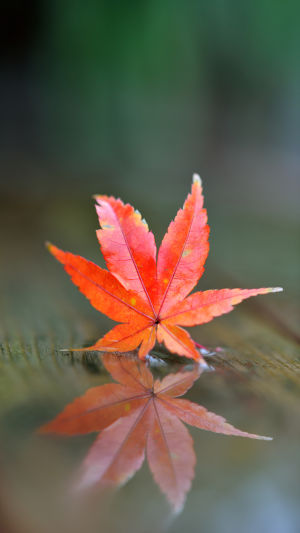The height of the maple tree can reach more than 29 meters, and the span of the crown can reach 16 meters.
The flowering period is from April to May, and the fruit period is from September to October.
As the tree grows, its crown opens and becomes rounded.
Branches reddish-brown to brown with small holes, winter branches black-brown or gray.
Maple leaves have bright colors and beautiful shapes.
It can be used to make bookmarks and specimens.
It turns fiery red in the fall and crimson when it falls to the ground.
The environment in which maple trees grow.
Distributed in the earth's north temperate and tropical mountains, hills, and some alpine mountains and other regions, throughout Europe, North America, Asia and the northern edge of Africa.
Maple trees like the sun, afraid of sun exposure, like a warm and humid climate, relatively cold, slightly resistant to drought, not resistant to waterlogging, suitable for fertile loose, well-drained soil.
The Value of Maple Leaf.
1. Ornamental value
Among the many red-leaved tree species in the world, the autumn leaves of maple trees are unique and fascinating.
The trees are beautiful and the leaves are beautiful.
In autumn, the leaves turn red or yellow, there are green and purple trees, which are famous autumn leaf varieties.
It can be used as a shade tree, a street tree.
It can be configured with other autumn leaf trees or evergreen trees to set off each other and enhance the beauty of autumn scenery.
2. The value of making sugar
Sugar maple and black maple, in particular, are great ingredients in their own right.
SAP from maple trees contains 0.5 to 7 percent sugar, up to 10 percent, and a 15-year-old maple tree can produce sugar continuously every year for more than 50 years.
3. Medicinal value
Maple leaves can also be used as medicine.
The biggest effect of maple leaf is to dispel wind and relieve pain.
It can prevent and treat various joint diseases and even pain, and effectively relieve physical discomfort.
Why do maple leaves turn red?
1. Stress response
The red color of maple leaves is actually a result of the tree's natural stress response.
Red actually acts as a sunshade, making the leaves stay on the tree longer and allowing the tree to absorb more nutrients.
Scientists in the United States have found that the reddness of maple leaves is linked to time, drought, pollution and, above all, a lack of nitrogen.
The red leaves actually act as a sunshade, slowing the shedding of leaves and allowing the tree to absorb more nutrients.
2. Internal factors
Leaves contain a lot of chlorophyll, so they are green.
As the weather cools in the fall, trees grow slower and the chlorophyll in their leaves decreases until only lutein is left and the leaves turn yellow.
Maple leaves contain special substances called anthocyanins, which are the opposite of chlorophyll.
As the weather turned cool, the maple leaves turned red.
3. External factors
When the temperature drops rapidly to a certain extent, the night temperature is much lower than the day, the leaves have not yet fallen.
Most of the chlorophyll has been destroyed, and the temperature difference between day and night increases, which also contributes to the formation of anthocyanins, so the leaves quickly turn red.
Maple leaf like a beautiful red butterfly, falling down from the tree, like a beautiful picture, full of vitality.





